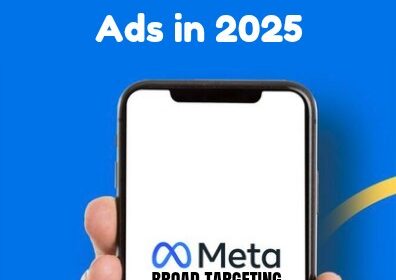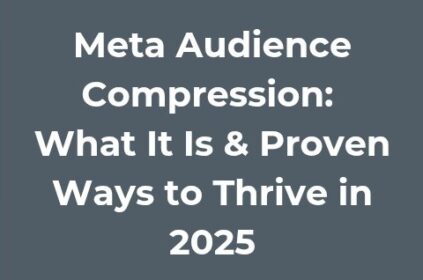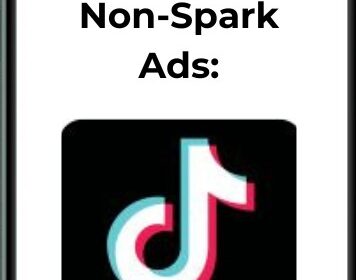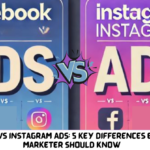TikTok has taken the digital advertising world by storm, offering businesses and marketers a unique opportunity to reach millions of engaged users. According to Statista, TikTok ads revenue worldwide is expected to reach over $53 billion by 2027. With its powerful algorithm, immersive video format, and growing e-commerce features, TikTok ads can be a goldmine for those who know how to use them effectively.
In our previous post, 5 Simple and Proven Strategies to Make Money with TikTok Advertising, we explored different ways you can turn TikTok into a revenue-generating platform. However, even with the right strategies, many digital advertisers make costly mistakes that can hurt their ROI and waste their ad spend.
If your TikTok ads aren’t delivering the results you expect, you might be falling into one of these common traps. I have taken out time to carefully break down 6 costly mistakes you make on TikTok—and more importantly, how to avoid them to maximize your success.

#1. Not Defining a Clear Advertising Goal
One of the biggest mistakes advertisers make when running TikTok ads is failing to set a clear objective before launching their campaigns. TikTok’s advertising platform offers various campaign objectives, including:
Awareness: Increase brand recognition and reach a wider audience.
Consideration: Drive traffic to your website, app, or landing page.
Conversions: Generate sales, leads, or other meaningful actions.
Why This Mistake Costs You Money
Without a well-defined goal, your campaign can lack direction, leading to poor audience targeting, ineffective ad creatives, and wasted budget. For example, if you want to drive sales, but your campaign is optimized for engagement instead of conversions, TikTok will show your ad to users who are likely to like or comment—not necessarily buy.
How Can You Avoid This Mistake?
#1. Choose the Right Campaign Objective – When setting up your TikTok ad, select an objective that aligns with your business goals. If you’re aiming for purchases, use the “Conversions” objective rather than just “Traffic” or “Engagement.”
#2. Set Clear KPIs (Key Performance Indicators) – Define success metrics such as CTR (Click-Through Rate), ROAS (Return on Ad Spend), CPA (Cost Per Acquisition), and conversion rates to track performance.
#3. Align Creatives with Your Goal – If your goal is to drive sales, ensure your ad copy, visuals, and CTA (Call-to-Action) all push for action (e.g., “Shop Now,” “Get Yours Today”).
By clearly defining your goal from the start, you will ensure that your TikTok ads work toward achieving real business results, rather than just generating views and engagement that don’t convert.
#2. Targeting the Wrong Audience
Even the most creative TikTok ad will fail if it is shown to the wrong audience. TikTok’s algorithm is designed to deliver ads to users most likely to engage, but advertisers often make mistakes in defining their audience, leading to wasted ad spend and poor results.
Common Audience Targeting Mistakes
#1. Targeting Too Broadly – If your audience is too wide, your ad may reach people who have no interest in your product, leading to low engagement and high costs.

#2. Going Too Narrow – On the flip side, overly specific targeting can restrict reach, making it hard to scale campaigns effectively.
#3. Ignoring Interest & Behavior-Based Targeting – TikTok offers deep insights into user interests and behaviors. Not leveraging this data means missing out on potential high-converting users.
#4. Skipping Lookalike Audiences – Many advertisers forget to use Lookalike Audiences to reach new users similar to their best customers.
How to Fix This and Improve Your Ad Performance
#1. Use TikTok’s Audience Insights – Analyze TikTok’s built-in Audience Insights tool to understand user demographics, behaviors, and content interactions before setting up your targeting.
#2. Leverage Interest and Behavior Targeting – Instead of relying only on age, gender, and location, target users based on their engagement with specific content categories and creators.
#3. Create Custom & Lookalike Audiences – Retarget users who have previously engaged with your brand or use Lookalike Audiences to find similar high-value customers.
#4. Test and Optimize Your Audience Segments – Run multiple ad sets with slight variations in targeting (e.g., different interests, demographics, or locations) and analyze which group performs best.
When you are able to refine your audience targeting, you will increase relevance, engagement, and conversions, making your TikTok ad spend much more effective.
#3. Overlooking the Importance of High-Quality Creatives
TikTok is a video-first platform where visually appealing and engaging content wins. Unlike traditional ad platforms, TikTok thrives on authenticity, creativity, and entertainment. Many advertisers make the mistake of using low-quality, overly polished, or sales-driven ads that fail to capture user attention.
If your ad doesn’t instantly engage your audience, it won’t perform well. TikTok’s algorithm favors ads that generate interactions (likes, comments, shares, and watch time). The less engaging your ad, the lower your chances of getting impressions, leading to poor click-through rates (CTR) and wasted ad spend.
Why This Mistake Costs You Money
#1. TikTok Ads Must Be Thumb-Stopping – Users scroll quickly, so an ad that doesn’t immediately hook viewers will be ignored.
#2. Engagement Impacts Cost Efficiency – TikTok prioritizes engaging content. If users skip your ad too soon, you’ll pay more per impression and click.
#3. Repetitive or Generic Ads Get Ignored – If your ad feels like a traditional TV commercial or a repurposed Facebook ad, users will likely skip it.
Common Creative Mistakes That Ruin TikTok Ads
#1. Repurposing Ads from Other Platforms – TikTok’s audience responds differently than Facebook, Instagram, or YouTube users. A static, corporate-feeling ad won’t work here.
#2. Ignoring TikTok’s Native Style – TikTok ads that don’t match the platform’s organic, user-generated content tend to perform poorly.
#3. Not Hooking the Viewer in the First 3 Seconds – The first 2–3 seconds of your video are crucial. If it doesn’t grab attention instantly, users will scroll past.
#4. Using Low-Quality Video and Sound – TikTok videos must be visually appealing and sound clear to keep users engaged.
#5. Skipping Captions and Text Overlays – Many users watch TikTok on mute. If your message isn’t clear without sound, you risk losing potential conversions.
How Can You Fix This Mistake and Improve Your Ad Performance?

#1. Make It Feel Native to TikTok
Study TikTok trends and blend in with organic content. Use popular effects, transitions, and native elements like text overlays and stickers. Your ad should feel like a natural TikTok post rather than a traditional commercial.
#2. Follow TikTok’s Creative Best Practices
Keep your videos between 15 to 30 seconds for maximum engagement. Use bold, eye-catching visuals to make users stop scrolling. Feature real people and authentic storytelling rather than staged commercials.
#3. Start With a Strong Hook in the First 3 Seconds
Since users scroll quickly, your TikTok ads must capture their attention immediately. Try a bold statement or shocking fact (e.g., “Stop wasting money on ads that don’t convert!”). Use a visual hook, like an engaging motion or transition. Also, try a question that directly speaks to the audience’s pain point.
#4. Use High-Quality Video and Sound
Film in 1080p HD resolution to maintain professional quality. Use clear and engaging audio—either a trending TikTok sound or a voiceover that commands attention. Avoid shaky footage unless it’s part of the creative style (use tripods or stabilization tools).
#5. Add Captions and Text Overlays for Clarity
Use on-screen text to reinforce your message and highlight key points. Add subtitles so users can follow the content even when watching on mute.
#6. A/B Test Different Creatives
Create multiple variations of your ad with different hooks, visuals, and formats. Use TikTok’s Split Testing tool to determine which creative performs best.
By prioritizing engaging, native-style, and high-quality creatives, you will dramatically improve your TikTok ad performance, lower costs, and drive more conversions.
#4. Setting the Wrong Budget and Bidding Strategy

Budgeting and bidding strategies are critical for TikTok ad success. However, many marketers either spend too much without testing or set a budget too low to achieve meaningful results.
Additionally, choosing the wrong bidding strategy can lead to inefficient spending and poor ad performance. Understanding how to allocate your budget effectively and select the right bidding option can make a significant difference in your campaign’s success.
Common Budgeting Mistakes
#1. Spending Too Much Too Fast – Some advertisers allocate a large budget upfront without testing their ads. If an ad performs poorly, they end up wasting money before identifying what works.
#2. Setting a Budget Too Low – Running ads with a minimal budget can limit reach and data collection. TikTok’s algorithm needs enough data to optimize ad delivery, and insufficient spending may prevent ads from reaching their full potential.
#3. Ignoring Daily and Lifetime Budgets – TikTok allows advertisers to set either a daily or lifetime budget. Many advertisers fail to adjust their budget type based on their campaign goals.
Understanding TikTok’s Bidding Options
TikTok offers different bidding strategies that determine how your budget is spent:
#1. Lowest Cost (Automatic Bidding) – This option lets TikTok’s algorithm get the most results at the lowest possible cost. It’s great for maximizing conversions without manually adjusting bids.
#2. Cost Cap – Advertisers set a target cost per result, and TikTok adjusts bids to stay within that range. This option is useful for maintaining consistent costs while scaling.
#3. Bid Cap – This allows advertisers to set a maximum bid amount for each auction. It offers more control over spending but can limit ad delivery if the bid is too low.
#4. Value-Based Bidding – This strategy prioritizes high-value conversions by bidding higher on users more likely to make a purchase or take a valuable action.
Tips for Budget Optimization
#1. Start with a Moderate Budget and Scale Gradually – Begin with a budget that allows enough data collection (at least $20–$50 per day per ad set) and scale up once you identify winning ads.
#2. Use Automatic Bidding for Initial Testing – TikTok’s lowest-cost bidding strategy is ideal when testing different creatives and audiences. Once you find a winning combination, switch to Cost Cap or Bid Cap for better control.
#3. Monitor Cost Per Result and Adjust Bids Accordingly – If your cost per click (CPC) or cost per acquisition (CPA) is too high, adjust your bid strategy or refine your targeting.
#4. Allocate More Budget to High-Performing Ads – Once an ad proves profitable, increase its budget gradually while monitoring performance. Avoid scaling too quickly, as it may disrupt TikTok’s learning phase.
By setting the right budget and bidding strategy, advertisers can prevent wasted ad spend, achieve stable performance, and scale successful campaigns profitably.
#5. Neglecting Retargeting and Lookalike Audiences
Another big mistake you make on TikTok is failing to retarget users who showed interest but didn’t convert. Many potential buyers engage with ads, visit landing pages, or even add products to their cart but don’t complete the purchase. Without retargeting, these warm prospects are lost, and businesses miss out on potential revenue.
Similarly, Digital advertisers who don’t leverage lookalike audiences miss a powerful opportunity to scale their campaigns by reaching new users who share similar characteristics with their best customers.
Why Retargeting Matters
Retargeting allows you to reconnect with users who have already interacted with your brand. These audiences are more likely to convert than cold audiences, as they have shown intent but might need an extra push.
Common retargeting opportunities include:
- Users who watched a certain percentage of your video ad.
- Visitors who clicked on your ad but didn’t take action.
- People who added items to their cart but didn’t complete the purchase.
- Previous customers who might buy again.
By serving these users tailored ads with incentives (discounts, urgency-driven messages, or social proof), you can significantly improve conversion rates.
How Lookalike Audiences Drive Scale
Lookalike audiences help you find new potential customers by targeting people who share similar behaviors and interests with your existing buyers. TikTok’s algorithm analyzes data from your best-performing customers and identifies other users likely to engage with your ads.
Benefits of lookalike audiences:
1. Higher conversion rates – Since these users are similar to your current customers, they are more likely to respond positively to your ads.
2. Efficient scaling – Instead of relying solely on broad targeting, lookalike audiences provide a more precise way to expand reach.
3. Lower acquisition costs – When optimized correctly, they help reduce cost per acquisition (CPA) by focusing on high-intent users.
Setting Up TikTok Pixel for Effective Retargeting
To run successful retargeting campaigns, you need to install and configure the TikTok Pixel on your website. This tracking tool collects valuable data on user behavior and enables you to create custom audiences for retargeting.
Steps to Set Up TikTok Pixel:
#1. Install TikTok Pixel on Your Website – Use TikTok’s Business Manager to generate a Pixel code and add it to your website manually or through integration tools like Shopify or Google Tag Manager.
#2. Set Up Event Tracking – Define key actions to track, such as page views, add-to-cart, and purchases, so you can segment users based on their interactions.
#3. Create Custom Audiences – Use your Pixel data to build retargeting lists based on users who engaged with your content but didn’t convert.
#4. Launch Retargeting Campaigns – Show personalized ads to warm audiences to encourage them to take action.
By combining retargeting and lookalike audiences, businesses can re-engage interested users while continuously expanding their reach with high-quality prospects. This strategy ensures long-term profitability and sustainable growth.
#6. Not Testing and Optimizing Ads
This is a common mistake I have seen digital advertisers making on TikTok. Setting up an ad campaign and expecting immediate success without testing different approaches. TikTok’s algorithm and user behavior are highly dynamic, meaning that what works today may not perform as well tomorrow. Advertisers who fail to test and optimize their campaigns often struggle with low engagement, high costs, and poor conversion rates.
Why Testing and Optimization are Important
#1. Audience Preferences Vary – Not all TikTok users respond to ads in the same way. Running multiple ad variations helps identify which creative, messaging, or targeting strategy resonates best.
#2. The Algorithm Rewards Performance – TikTok prioritizes ads that generate high engagement and conversions. If an ad underperforms, TikTok will reduce its reach, leading to wasted ad spend.
#3. Small Adjustments Can Make a Big Impact – Minor tweaks, such as changing the ad copy, video thumbnail, or call to action (CTA), can significantly improve results. Without testing, advertisers miss out on opportunities to optimize their ROI.
How to Test and Optimize TikTok Ads for Better Results
#1. Run A/B Tests – Test different versions of an ad to see which performs better. You can experiment with:
- Different hooks (first 3 seconds)
- Varying visuals, text overlays, and sounds
- Different CTAs (e.g., “Shop Now” vs. “Get Yours Today”)
#2. Experiment with Multiple Target Audiences – TikTok allows for detailed audience segmentation. Test different age groups, interests, and behaviors to determine which audience responds best to your ads.
#3. Monitor Key Performance Metrics – Track important ad metrics such as:
- Click-through rate (CTR)
- Conversion rate
- Cost per acquisition (CPA)
- Engagement rate (likes, shares, comments)
By analyzing these metrics, you can identify which ads are working and which need improvement.
#4. Leverage TikTok’s Smart Optimization Tools – TikTok offers automated ad optimization features such as:
Smart Performance Campaigns (SPC) – Uses AI to optimize ad delivery.
Automated Creative Optimization (ACO) – Rotates different ad variations and selects the best-performing ones.
#5. Scale Winning Ads and Pause Underperforming Ones – Once you identify high-performing ads, increase the budget to maximize results. Meanwhile, pause or adjust ads that aren’t delivering strong engagement or conversions.
By continuously testing and optimizing TikTok ads, advertisers can reduce ad costs, improve engagement, and increase ROI. This approach ensures that campaigns stay relevant, competitive, and aligned with TikTok’s ever-evolving trends.
Conclusion
Running successful TikTok ads requires more than just launching a campaign and hoping for the best. Many digital marketers struggle with common mistakes—choosing the wrong objective, poor audience targeting, weak ad creatives, failing to test and optimize, and neglecting retargeting. These missteps can lead to wasted ad spend, low engagement, and disappointing ROI.
To maximize results, you should focus on setting clear campaign objectives, refining their targeting strategy, crafting compelling creatives, and continuously testing and optimizing their ads. Additionally, leveraging retargeting and lookalike audiences can significantly improve conversions and scale campaigns effectively.
By applying these best practices, you can turn TikTok into a profitable advertising channel and unlock new revenue opportunities.
What’s your biggest challenge with TikTok ads? Share your experience in the comments, and let’s discuss how to improve your campaign performance!










